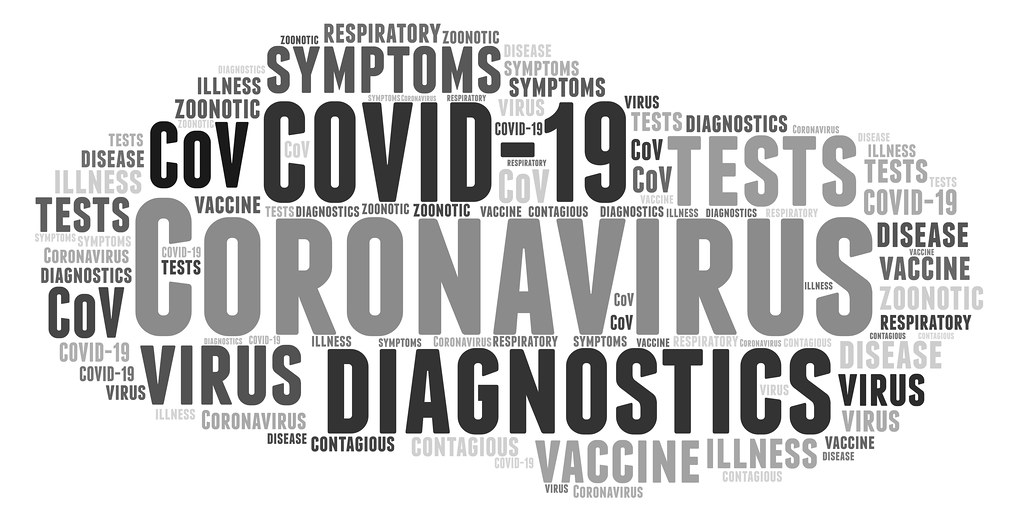
When the Omicron variant emerged in early December, there was a big split in the consensus between three views: “Omicron is mild”, “Omicron is just as bad as Delta” and “let’s wait and see what the data tell us over the coming weeks”
Unfortunately, while the sensible scientists and commentators were erring on the side of “we don’t yet know so let’s be cautious”, far too many in the press and positions of power latched on to the idea that Omicron was just like a cold, maybe flu at the worst, it was the best thing to happen, and it effectively signalled the end of the pandemic.
So, two months on, what do we actually know about Omicron scientifically?
The first really important point to make, up front, is that Omicron hit the UK at a time when a high proportion of the population were vaccinated and many of the most vulnerable had been given a booster. That high level of population immunity is the main reason why Omicron has not been as damaging in terms of Covid-19 hospitalisations and deaths as previous variants. In the US, where vaccination rates are significantly lower, Omicron has caused real problems, with pandemic record deaths and hospital admissions since December 2021 in States with lower vaccination rates.
For those who want to understand the more in-depth picture, I’ll dive a bit deeper into what we know.
How mild or severe is Omicron compared to other variants?
A good measure for how severe a disease is, is your risk of being admitted to hospital if you catch the disease.
While different studies give slightly different results, there is a consensus that the risk of severe disease or death from Omicron is between half and a third of that from the Delta variant.
It is worth noting that using this measurement, Delta was 2.4 times more severe as the original strain, meaning Omicron is around the same severity as the original strain of Covid-19. And that was far from being considered a ‘mild’ virus!
Vaccinations
Some of Omicron’s mutations mean that it is less easily recognised by Covid-19 antibodies gained through previous infection, vaccination, or those used to treat Covid-19 patients. This means many more people are getting either reinfected or infected following vaccination.
The latest figures on vaccine protections are shown below:
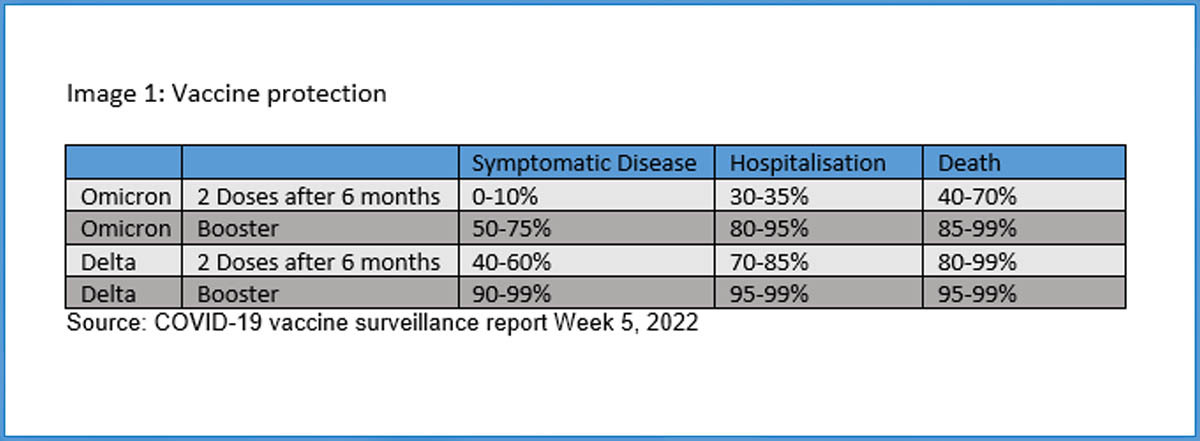
The data shows two important points:
- A booster vaccination is really important to protect yourself against Omicron
- The first two vaccinations still offer a level of protection against severe disease and death.
The second point is the important one when looking at the idea that Omicron is mild. The vast majority of over-12s in the UK have had at least one dose of vaccine (91 per cent). Eighty four per cent have had two doses and 65 per cent have had a booster. This means that over 90 per cent of the population have at least some protection against severe disease if they catch Omicron, regardless of how intrinsically severe or mild this new variant is.
As this graphic from the Financial Times shows, while Omicron may be intrinsically 3.5 times ‘milder’ than Delta, the protection offered by getting a booster means you are seven times less likely to need hospitalisation from Omicron, than if you were unvaccinated.
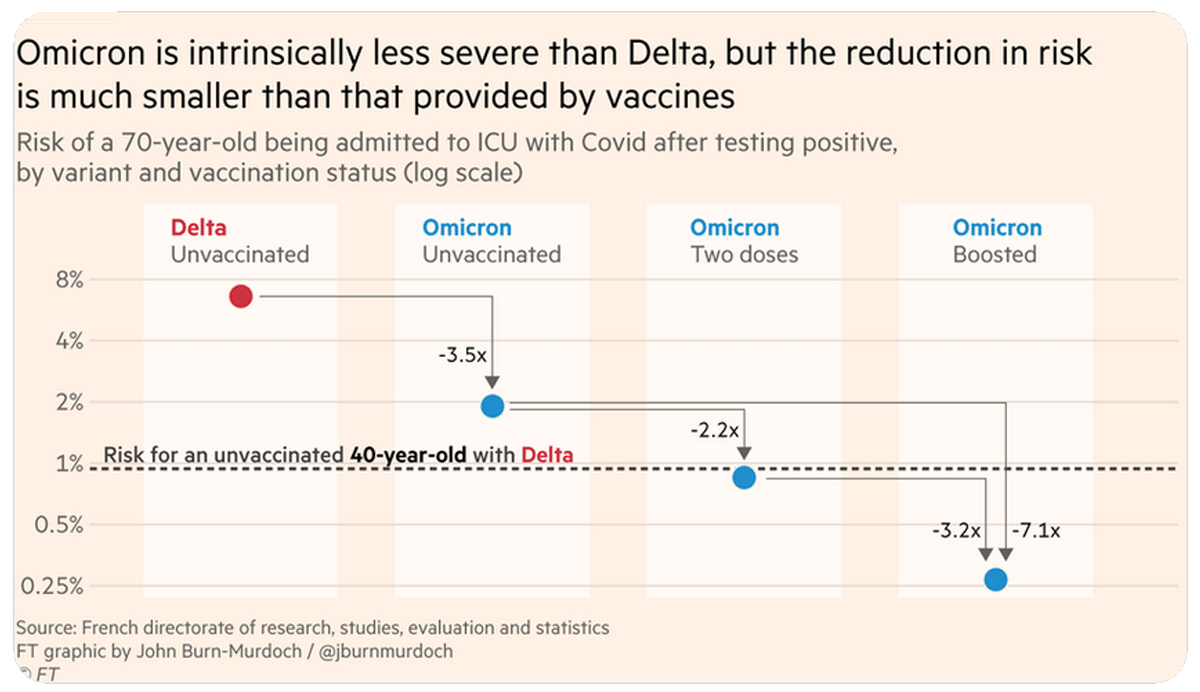
So, while Omicron is intrinsically a bit milder than Delta, the protective benefits of the vaccines have a greater effect on how mild the variant appears to be.
Again, the Financial Times have produced some great graphics in this twitter thread, looking at what UK hospital numbers would have been were it not for boosters. Take a look at the whole thread for comparisons of numbers in the US and Poland, where vaccination rates are much lower.
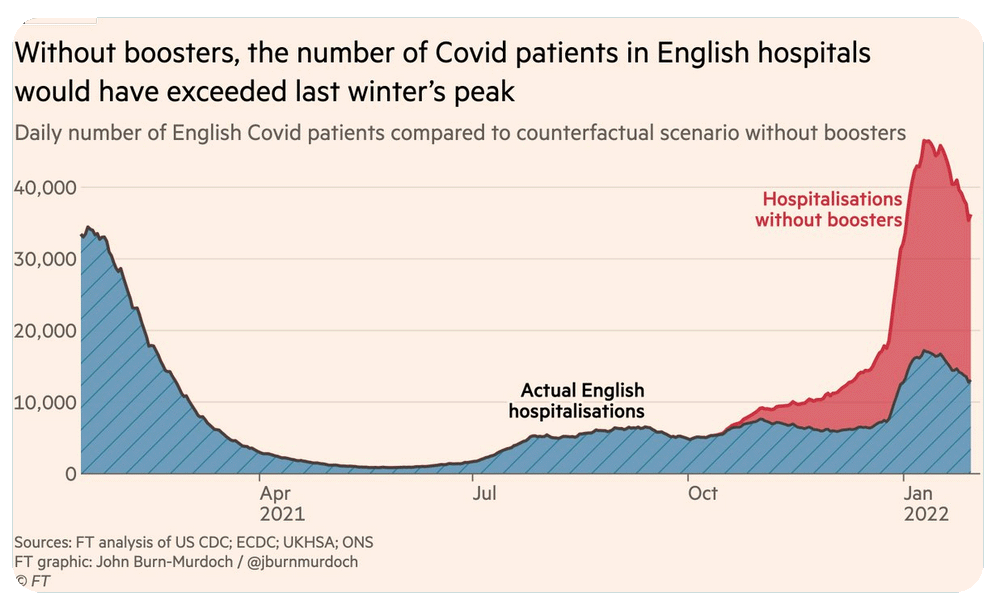
Is Omicron really just like a cold/flu?
In short, absolutely not. Covid-19 has never been like flu, as it is a completely different virus. While flu affects the lungs primarily, Covid-19 is a virus that attacks many different parts of the body, from the brain to the kidneys, liver and heart. It enters cells via a protein called an ACE2 receptor, so it can attack any organ where cells have ACE2 receptors.
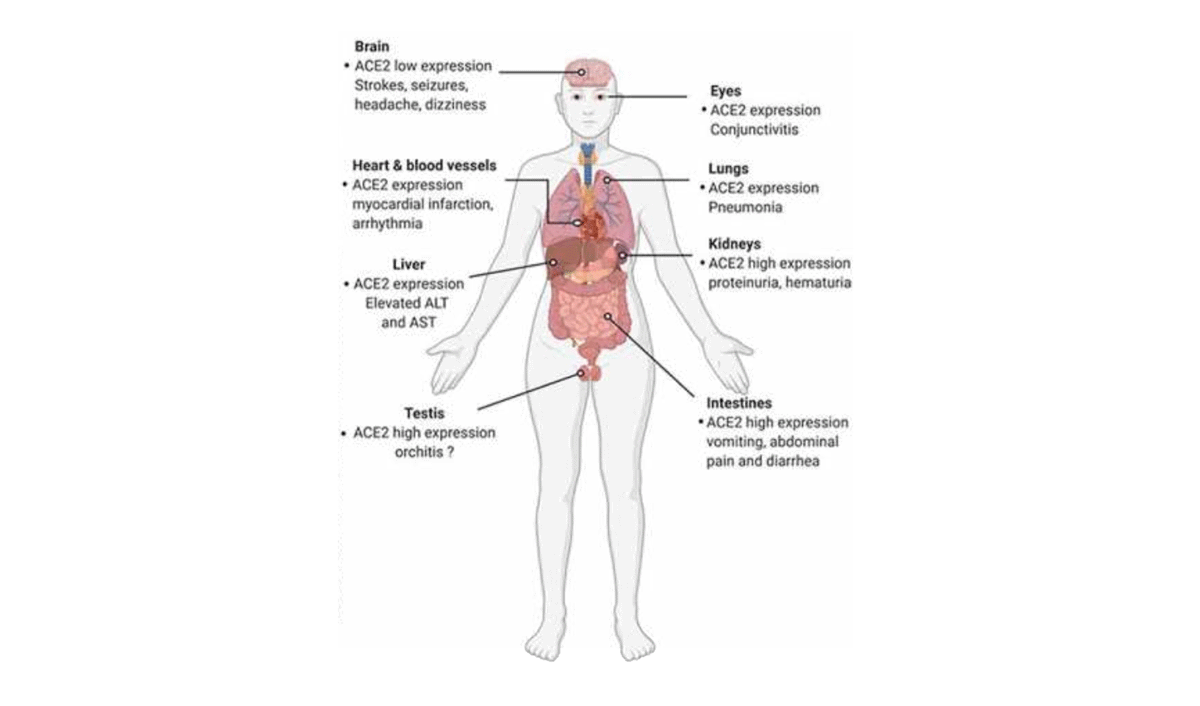
This may be one of the reasons why so many more people are suffering from Long Covid than the post-viral symptoms you would expect from similar numbers of flu infections, as there are many more organs affected by the coronavirus.
In terms of how much more lethal Covid-19 is than flu: before vaccines were available, Covid was 10-15 times as deadly as flu in the over 50s. Improved treatments, vaccines, immunity through previous infection, and the milder variant, means it is now only two to three times as deadly as flu in the over 50s. That’s fantastic news. But while it is only two to three times more lethal, it is five times as contagious. With around one in 20 people currently infected with Covid-19 (ONS infection survey), your chances of catching it are far higher than would ever have been the case for flu.
So if it’s milder why do we still need to be careful?
It’s a numbers game.
While your individual risk of being hospitalized or dying from Covid-19 are greatly reduced if you are tripled vaccinated, the risk has not gone away.
Only around 0.1 per cent of Covid-19 patients at present are dying from Covid-19, compared to over one per cent in 2020, but the number of people currently infected with Covid-19 is sky high.
One in 19 people are thought be infected with Covid-19 at the moment (early Feb 2022). These numbers are higher than anything we’ve seen prior to Omicron. This is because Omicron is about 3.5 times as contagious as Delta (which was more contagious than Alpha, which was itself more contagious than the original strain!)
Even a low percentage of a large number can lead to much larger numbers than you might like. A variant that is milder, but which infects many more people, can lead to the same sort of numbers ending up in hospital.
It is worth noting that, despite the supposed ‘mildness’ of Omicron, along with the high vaccination and booster coverage, the current daily deaths (which have fallen from their mid-January peak) are still higher than at any point during the Delta wave, as are hospitalisations.
Future variants
There have been two misleading narratives going around regarding Omicron and other variants.
One is the suggestion that Omicron is the key to ending the pandemic. As it is highly contagious and milder than Delta, that means everyone will get it, become immune and Covid-19 will no longer be a threat.
Sadly, I’ve lost count of the number of times during the last two years that certain voices have claimed we have almost reached ‘herd immunity’ and the pandemic is nearly over. As Omicron has brought into sharp relief, previous infection doesn’t mean you will be protected against future variants. While it was the case with Alpha and Delta, it is not the case with Omicron. We have no way of knowing whether it will be the case with the next variant to emerge.
The second idea is that viruses get less severe as they evolve. While it is certainly a nice idea, it simply isn’t the case. Viruses mutate all the time; every infection is capable of creating a slightly different variation. The vast majority of mutations will have no impact on the virus’ ability to thrive, but occasionally a mutation, or more likely a group of mutations will give that virus an advantage and will therefore spread better.
If you have a virus that is so severe that it kills the host before it can be spread to others, then there is an evolutionary pressure to become less severe, in order to keep the host alive a bit longer so the virus can successfully spread.
But with SARS-CoV-2 (the virus that causes Covid-19), people are most infectious just before and after symptoms first appear, meaning the virus has done its job of infecting, replicating and moving on, long before that person becomes seriously ill and dies. There is no pressure on this particular virus to become milder. So, it is a game of chance. Alpha was more severe than the original strain. Delta was more severe than the original strain, and more severe than Alpha. Beta and Gamma (which didn’t really impact on the UK) were 3 times as deadly as the original strain, making them the most severe we have encountered so far. Omicron was the anomaly in being milder that the preceding variant, but it was still more severe than the original strain.
We got lucky with Omicron being as mild as it is, given how contagious it is and how well it reinfects previously protected people.
There is no way of predicting what the next variant might do. It might be milder, but it might just as easily be more severe. A more severe variant that is also highly infections and evades previous immunity would obviously be a huge problem!
Conclusions
Omicron is indeed milder that Delta, but similar in severity to the original Covid-19 strain. Vaccines have had the biggest impact on how likely you are to get seriously ill from catching Omicron. For the unvaccinated, or the immunocompromised, for whom vaccines are much less protective, Omicron is still a significant threat.
The narrative that ‘Omicron is mild’ and therefore we can pretend the pandemic is over, is a dangerous one;
- A new variant could emerge at any time, and we have no way of predicting how mild or severe that variant may be.
- There are still millions of clinically extremely vulnerable people, for whom Omicron remains a big threat.
- Long Covid is a real and serious issue for millions of people. The latest ONS estimate shows 1.3 million people living at home are suffering from the effects of a Covid-19 infection four weeks after catching Covid-19. Half a million of those people caught Covid-19 over a year ago. Allowing Covid-19 to spread through the population unchecked means these numbers will continue to increase.
- Finally, the idea that Covid-19 is now mild, means that a lot of people have decided not to bother getting their boosters, without really understanding that it is BECAUSE of the boosters that Omicron has been able to be labelled as mild! Nearly one million people a day were getting boosters in December, now it is only about 35,000 per day, with well over 10 million people still un-boostered, having previously had two vaccine doses.
Regardless of what the media narrative may be, and whatever is said by someone hoping to cling on to their position of power by declaring the pandemic over, please get boostered, continue to wear a mask, test yourself before visiting vulnerable friends and family, and just be aware that Covid-19 is still here. It is still a threat to many, and still has the potential for a few more twists and turns before this pandemic ends.




